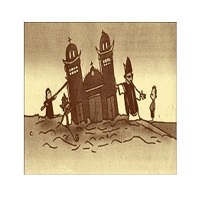
Crisis is forming the current and future direction of the New Zealand Catholic Church.
The recent clergy moves have prompted conversations about the “state of the church”, the lack of priests, and the future of parishes and the diocese.
Church-going Catholics see the crisis when no priest presides at Mass. The more profound crisis is seen in the collapsing diocesan structure and the evolving culture of the priesthood.
Priesthood
The “traditional” sources of vocations, family, parish and school, are dry. No local or indigenous men have been ordained from this diocese for over twenty years. Since then, there have been four ordinations of men from other countries.
New Zealand has always relied on priests from other countries, but we didn’t describe them as International priests back then. Now, we look to other places for seminarians and ordained men. Last week at Mass, a couple, back from India, said they had spoken to their brothers (the husband’s brother and the wife’s brother), who are priests, about coming to New Zealand and helping out because they can see priests here are so few.
The social and theological impact on the Local Church of International clergy is not well assessed because the motivation for inviting them is to sure-up dying dioceses. These men come generously to plug the holes in the infrastructure of a dying nineteenth-century “Euro-Irish” missionary church. I am not attacking them, but asking a more fundamental question: “what are we doing and why?” What is the Missiology (theology of mission) at play here? Are our actions the result of discernment and the reading of the signs of the times, or are they a desperate attempt to hold back this reality?
A growing trend among clergy is a return to a 1950s understanding and practice of priesthood and ministry. It is observable in the return of a devotional, non-liturgical approach to public worship. It is seen in how “Mass is said” as distinct from “celebrating the Eucharist.” Priesthood is changing because presbyterates (groups of priests in a diocese) no longer share a common identity, training and theological language. Their “cultural priesthood” is fragmented.
Parish Change
Parishes are not collapsing, but the nineteenth-century diocesan structure is. Parish demographics are changing through immigration. In Palmerston North, 40% of the Catholic population is Indian. For many immigrant families—now as in the 1900s, 1940s, 1950s, 1960s, and 1990s—a priest from home is a reassurance, but it is also a perpetuation of what happens at home.
It is typical for us to take an activity from “the past” (dance, language, music, food) and bring it to the “new world”, where it becomes an icon of identity. In the process, it becomes more critical here than back home, an immovable artefact of a former life. We call this tradition and have museums to house it.
As the established “Euro-Irish” church culture dies out in parishes and schools, the “Global Asian” church culture is emerging. Consequently, we encounter a tangle of “cultural catholicisms” that don’t understand each other. All these cultures expect distinct outcomes from the Church, diocese, clergy, parish and school. Clergy and laity are all part of this—it is the soup we all swim in!
Emergence, dying, and divergence are most clearly seen in liturgical practice because public prayer is the face of the praying community. There is a clear desire for a more assertive devotionalist approach to liturgy. The lack of differentiation between liturgical and devotional practices is a hallmark of this change.
The Crisis Experience
A Pastoral Leader recently said, when referring to priestly ministry and Sunday Mass: “before we knew where we were, we had a regular priest and regular patterns. Now we don’t know what will or won’t happen.” The sentiment reflects the tension of living in a perpetual state of crisis. People experience crisis as a vulnerability to change. Where leadership is made impossible or can’t be provided, management of the workarounds is the next option. Before long, the workaround is the norm.
As a result of workarounds, many church communities literally cannot afford the roof over their heads. We have too many Sunday Masses in some places and none in others. This begs the question: is the Catholic population capable of change? Or do we need to stubbornly cling to dying structures as a drowning person clings to a sinking ship because it’s there—for the moment?
Dealing with Crisis Defines Us
 No one walks away from an experience of crisis unscared. But how we deal with a crisis defines us. We are fortunate in that we have the scriptures to guide us during times of crisis and the sacraments to nurture our personal and collective faith, hope and love. The theological virtues (faith, hope, love) are theological because they are “found” in God, in that God is the source and eternal example of life.
No one walks away from an experience of crisis unscared. But how we deal with a crisis defines us. We are fortunate in that we have the scriptures to guide us during times of crisis and the sacraments to nurture our personal and collective faith, hope and love. The theological virtues (faith, hope, love) are theological because they are “found” in God, in that God is the source and eternal example of life.
Faith, hope and love call us to discern the signs of the times. Our institutions (parish, school, foodbank, hospitals, religious congregations) are not absolutes. They are the tools we use to participate in God’s work of salvation. History shows these have come, gone and changed due to external influences.
We are changed by the world around us, by the impacts of what we call culture, globalisation and technology. Navigating this change is complex and living in crisis is exhausting.
Joe Grayland


